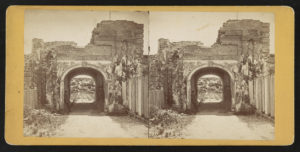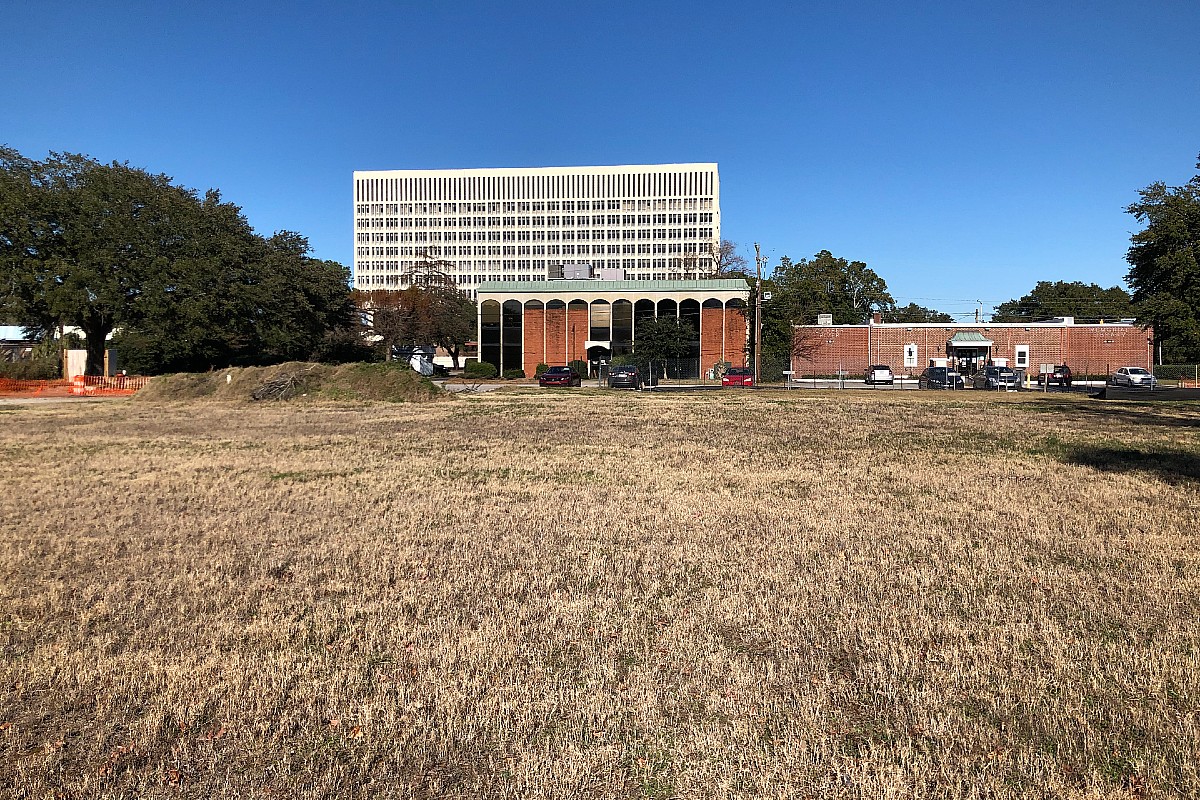Here is an empty urban field somewhere in Charleston County that isn’t supposed to be empty. Where is it and what is supposed to occupy this space? Send to editor@charlestoncurrents.com. And don’t forget to include your name and the town in which you live.
Our previous Mystery Photo
 Our Jan. 11 photo, “In stereo,” showed stereoscopic photos of the war-damaged sally port of Fort Moultrie in 1865.
Our Jan. 11 photo, “In stereo,” showed stereoscopic photos of the war-damaged sally port of Fort Moultrie in 1865.
Congratulations to those who identified it correctly: Jay Altman of Columbia; Jane Bergen of Alexandria, Va.; George Graf of Palmyra, Va.; Allan Peel of San Antonio, Texas; Marnie Huger of Richmond, Va.; and Joe Mendelsohn of Charleston.
Altman shared that from April of 1863 until February 1865, Confederate forces at Fort Sumter and Fort Moultrie were bombarded by the Union navy. Confederate troops left Fort Moultrie when the army’s forces left Charleston as Gen. W.T. Sherman’s forces neared Charleston, although they diverted to Columbia.
Peel shared information that is on the back of the photo, which is in the Library of Congress: “Additional information published by Quinby & Co. is printed on the back of the photo, as shown here. It reads (including some grammatical errors): “This picture presents a view of the Sally-Port of Fort Moultrie after the war. The Sally-Port is situated on the land side of the Fort, and was well protected from within. It was approached from the parade ground of the Fort, and was constructed of solid brick work of several feet in thickness. The walls above show the effects of the fire from Fort Sumter and Morris’ Island, as well as the Iron Clads and other vessels of the fleet off the bar. This old Fort, of revolutionary origin and renown, acted a very conspicuous part in the late war. It is worthy of a visit from strangers visiting Charleston.”
Graf noted that a sally port is a secure, controlled entryway to an enclosure, e.g., a fortification or prison. The entrance is usually protected by some means, such as a fixed wall on the outside, parallel to the door, which must be circumvented to enter and prevents direct enemy fire from a distance.
He added that stereoscopic photography was very popular in 19th and 20th centuries for their ability to recreate the illusion of three-dimensional view for viewers using a stereoscope viewer.
- Send us a mystery: If you have a photo that you believe will stump readers, send it along (but make sure to tell us what it is because it may stump us too!) Send it along to editor@charlestoncurrents.com.




 We Can Do Better, South Carolina!
We Can Do Better, South Carolina!
























